Key Takeaways
- Strategic Planning for Long-Term Success: Permanent recruitment requires a well-defined strategy, aligning hiring processes with organizational goals to attract and retain top talent.
- Best Practices for Effective Hiring: Implementing clear role definitions, structured interviews, and leveraging technology improves recruitment efficiency and candidate quality.
- Ongoing Evaluation and Adaptation: Regularly assess recruitment metrics like time-to-hire and quality of hire to refine processes and ensure long-term success in permanent recruitment.
In today’s competitive business environment, the ability to attract and retain top talent is crucial for the long-term success and sustainability of any organization.
Permanent recruitment plays a pivotal role in this process, offering employers the opportunity to build a skilled and dedicated workforce that can drive growth, foster innovation, and maintain operational efficiency.
As companies strive to achieve their business objectives, having a team of committed, high-performing employees is not just a necessity—it’s a strategic advantage.
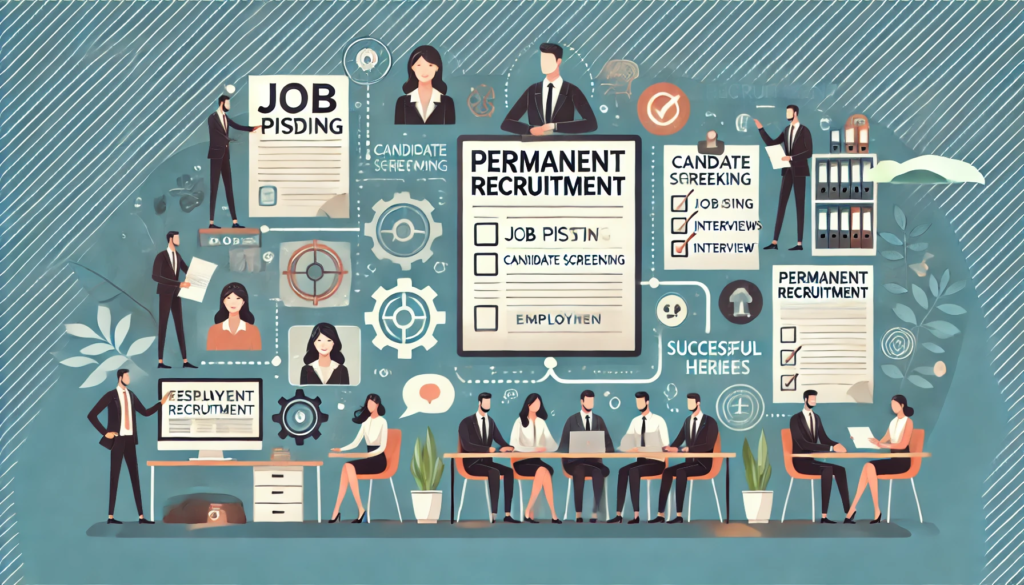
Permanent recruitment, unlike temporary or contract staffing, focuses on hiring employees who will stay with the company for the long haul.
These individuals are not only expected to contribute their skills and expertise but also to become integral members of the company culture, helping to shape the future of the organization.
However, the process of permanent hiring is complex, requiring a well-thought-out strategy, a deep understanding of the market, and the ability to evaluate candidates beyond just their resumes.
This comprehensive guide will walk you through every step of the permanent recruitment process, from understanding the fundamentals of hiring permanent employees to mastering best practices that ensure you attract and retain the right talent.
We’ll explore effective sourcing strategies, provide tips for writing compelling job descriptions, and offer advice on conducting thorough interviews that lead to successful hires.
Furthermore, we’ll address common challenges employers face in the recruitment landscape, such as competition for talent, long hiring timelines, and biases that can creep into the decision-making process.
You’ll learn how to overcome these obstacles and optimize your recruitment efforts for long-term success.
Whether you’re a seasoned HR professional or a small business owner navigating the hiring landscape for the first time, this guide will equip you with the knowledge and tools necessary to build a robust recruitment strategy that delivers results.
By the end of this guide, you’ll understand how to leverage permanent recruitment not only to fill open positions but also to create a workforce that aligns with your company’s goals, values, and vision.
So, let’s dive into the world of permanent recruitment and explore how you can transform your hiring process to attract, hire, and retain the best talent available in today’s competitive job market.
Permanent Recruitment: A Complete Guide for Employers
- Understanding Permanent Recruitment
- The Permanent Recruitment Process
- Best Practices for Permanent Recruitment
- Challenges in Permanent Recruitment
- How to Ensure Long-term Success in Permanent Hiring
- The Role of Recruitment Agencies in Permanent Hiring
- Evaluating the Success of Permanent Recruitment
1. Understanding Permanent Recruitment
Permanent recruitment is a strategic process in which employers hire employees to join their organizations on a long-term basis, with the expectation that these employees will contribute to the company’s success for the foreseeable future. Unlike temporary or contract staffing, permanent recruitment focuses on sourcing talent that will be integral to the company’s long-term growth, culture, and operational goals. This section will explore the concept of permanent recruitment, its key components, and why it is crucial for businesses aiming to build a dedicated and stable workforce.
What is Permanent Recruitment?
- Definition: Permanent recruitment refers to the process of hiring individuals for full-time positions that are not time-limited or project-based. These roles typically offer long-term employment, stability, and career growth opportunities.
- Employee Expectations:
- Permanent employees are generally expected to commit to the organization for an extended period, contributing to its success over the long term.
- These employees receive full benefits, including health insurance, retirement plans, and other employee perks.
- Key Characteristics:
- Long-Term Commitment: Unlike temporary hires, permanent employees are integral to a company’s long-term planning and strategy.
- Career Growth: Permanent roles often come with the opportunity for skill development, promotions, and professional growth within the organization.
- Higher Stability: Permanent employees enjoy greater job security compared to temporary or contract workers.
Differences Between Permanent and Temporary Recruitment
Understanding the distinction between permanent and temporary recruitment is essential for employers when developing a recruitment strategy.
- Duration:
- Permanent Recruitment: The hiring process focuses on filling roles for indefinite periods, usually with the expectation of employees staying with the company long-term.
- Temporary Recruitment: Temporary hires are brought on for short-term assignments, often covering specific projects, seasonal peaks, or maternity leave.
- Benefits & Compensation:
- Permanent Employees: Receive comprehensive benefits packages, including healthcare, retirement contributions, paid time off, and other company-sponsored perks.
- Temporary Employees: Typically receive fewer benefits, and may work on a contract basis, often with hourly pay or per-project compensation.
- Employment Relationship:
- Permanent Employees: Tend to form long-term relationships with the company and contribute to its culture, becoming brand ambassadors both internally and externally.
- Temporary Employees: Often have a more transactional relationship with the organization, as their engagement is limited to the specific duration of their contract.
Why is Permanent Recruitment Important for Employers?
Permanent recruitment is vital for companies aiming to build a stable, skilled, and loyal workforce. Here’s why it matters:
- Consistency and Stability:
- Permanent employees provide continuity, reducing the disruption that may come with high employee turnover.
- Having a stable team ensures that core roles are always filled, enabling business operations to run smoothly.
- Cultural Fit:
- Long-term employees are more likely to align with the company’s values, culture, and mission. They become part of the organizational fabric, contributing to a cohesive and positive work environment.
- A stable workforce allows employers to cultivate a company culture that attracts and retains top talent.
- Skills Development:
- Permanent recruitment allows companies to invest in training and development programs for their employees, fostering skill growth over time.
- By hiring permanent employees, employers create opportunities for career advancement within the organization, leading to higher job satisfaction and employee retention.
- Reduced Recruitment Costs:
- Although permanent recruitment may involve more time and investment upfront, it can ultimately lead to cost savings in the long run by reducing turnover and the need for frequent re-hiring or temporary staffing solutions.
The Permanent Recruitment Process: Key Steps
The permanent recruitment process is more involved than temporary hiring and typically includes several crucial steps. A thorough, systematic approach ensures that employers find the best candidate for each position.
- 1. Job Analysis and Defining Hiring Needs:
- Conducting a job analysis is the first step in permanent recruitment. This involves identifying the skills, qualifications, and experience required for the role.
- Understanding the hiring needs, company culture, and long-term goals helps in crafting the right job description.
- 2. Sourcing Candidates:
- Companies may use various recruitment channels to attract potential candidates:
- Job Boards: Posting on popular job boards like Indeed, LinkedIn, or Glassdoor.
- Social Media: Leveraging platforms like LinkedIn, Twitter, and Facebook to reach potential candidates.
- Recruitment Agencies: Partnering with agencies to tap into their network of pre-screened candidates.
- Company Website: Using the company’s career page to attract candidates directly.
- Companies may use various recruitment channels to attract potential candidates:
- 3. Screening and Shortlisting:
- Screening resumes, conducting initial interviews, and assessing candidates’ skills and qualifications are vital to ensuring that only the most suitable candidates progress to the next stage.
- Screening tools and Applicant Tracking Systems (ATS) can help identify qualified applicants quickly.
- 4. Interviewing:
- Structured interviews, whether in-person or virtual, allow employers to evaluate candidates’ suitability for the role, both in terms of technical skills and cultural fit.
- Behavioral interviews and situational questions help assess a candidate’s problem-solving abilities, work ethic, and adaptability.
- 5. Making the Offer:
- Once the ideal candidate is selected, the next step is to make a formal job offer, including salary negotiations, benefits, and job expectations.
- A well-crafted offer letter can be an essential part of ensuring candidates accept the position.
The Role of Employer Branding in Permanent Recruitment
Employer branding is increasingly important in attracting permanent employees who align with the company’s values and goals. A strong employer brand can make a significant difference in attracting top talent.
- Attracting Top Talent:
- A positive employer brand can help companies stand out in competitive markets, making them the employer of choice for candidates looking for long-term career opportunities.
- Candidate Engagement:
- Potential candidates are more likely to engage with companies that have a good reputation for treating employees well and providing career growth opportunities.
- Example:
- Google: Known for its employer brand, Google attracts talented individuals by emphasizing its company culture, work-life balance, and opportunities for growth. As a result, Google’s permanent recruitment efforts are consistently successful in attracting high-caliber candidates.
Examples of Permanent Recruitment Success
- Example 1: Small Business Expansion:
- A small tech startup, eager to expand its development team, uses permanent recruitment to hire software engineers. By focusing on long-term growth and cultural fit, they successfully hire a dedicated team of employees who are now leading the company’s product development efforts. These permanent hires contribute to a stable work environment and enhance the company’s growth trajectory.
- Example 2: Large Enterprise Workforce:
- A multinational corporation invests in permanent recruitment to ensure that key positions in its management team are filled with experienced and dedicated employees. By leveraging internal mobility and offering career progression paths, the company builds a workforce that is both loyal and highly skilled, reducing turnover and fostering employee satisfaction.
The Benefits of Permanent Recruitment for Employers
- Long-Term Return on Investment:
- Permanent employees often offer a higher ROI than temporary hires due to their long-term contributions, skills development, and loyalty.
- Stronger Employer-Employee Relationships:
- Permanent roles foster deeper connections between the employer and employee, resulting in better team collaboration, trust, and shared goals.
- Talent Retention:
- Permanent recruitment provides the foundation for strong talent retention strategies, helping employers keep top performers and reduce the costs associated with turnover.
In conclusion, permanent recruitment is an essential strategy for building a committed and highly skilled workforce. It provides long-term stability, growth opportunities, and cultural alignment that temporary staffing cannot offer. By understanding the permanent recruitment process, the differences between permanent and temporary hiring, and leveraging employer branding, businesses can successfully attract, hire, and retain top talent that will contribute to their long-term success.
2. The Permanent Recruitment Process
The permanent recruitment process is a multi-step journey that allows employers to select candidates who will become integral members of their team for the long term. Unlike temporary hiring, permanent recruitment focuses on filling positions with individuals who are expected to grow with the company, contributing to its success and culture. This process is crucial in building a skilled, loyal workforce, and it demands careful planning, assessment, and execution. In this section, we will break down the entire permanent recruitment process, highlighting each step, best practices, and real-world examples to help employers make informed, strategic decisions.
1. Job Analysis and Defining Hiring Needs
The recruitment process begins with a deep understanding of the role that needs to be filled. Without clarity on the job’s requirements and the broader organizational needs, it is impossible to find the ideal candidate.
- Conducting a Job Analysis:
- Analyze the specific responsibilities, tasks, and expectations of the position.
- Consult with team leaders or department heads to gain insights into what the ideal candidate should bring to the role.
- Identify both technical skills (e.g., programming, data analysis) and soft skills (e.g., communication, adaptability) required for the role.
- Defining the Hiring Needs:
- Assess whether the new role aligns with the company’s long-term objectives and strategic goals.
- Understand the impact the new hire will have on team dynamics and company culture.
- Decide if the new hire is meant to fill an existing gap, take on new responsibilities, or address anticipated growth.
- Example:
- A tech company looking to expand its AI research division conducts a thorough job analysis for a new AI engineer role. They identify key technical competencies like proficiency in machine learning and familiarity with Python, as well as soft skills like problem-solving and teamwork.
2. Crafting the Perfect Job Description
Once the hiring needs are defined, the next step is to create a job description that will attract the right candidates. A well-crafted job description not only outlines the role but also highlights why the company is an appealing place to work.
- Job Title and Role Summary:
- Use clear, descriptive job titles that accurately reflect the position (e.g., “Senior Data Analyst” vs. “Data Expert”).
- Write a brief summary of the job’s key responsibilities and expectations.
- Key Responsibilities:
- List the main duties of the position in bullet points, ensuring clarity and brevity.
- Provide specific examples of the tasks the candidate will perform, making sure to avoid vagueness.
- Required Skills and Qualifications:
- Include both required and desirable qualifications, such as education, experience, certifications, and technical skills.
- Specify the level of expertise required for each skill (e.g., “3+ years of experience in project management” or “Proficiency in advanced Excel functions”).
- Company Culture and Benefits:
- Highlight the company’s culture and values to ensure a good cultural fit.
- Mention key benefits, career development opportunities, and employee perks that may entice candidates.
- Example:
- A multinational corporation recruiting for a “Marketing Director” position crafts a job description emphasizing innovation, leadership, and strategic vision. They also list perks such as remote work options and professional development programs, which appeal to top-tier talent.
3. Sourcing Candidates
Sourcing candidates is one of the most critical steps in the permanent recruitment process. The effectiveness of sourcing determines the quality and quantity of candidates you will be able to choose from.
- Using Job Boards and Online Platforms:
- Post the job on popular job boards like LinkedIn, Indeed, and Glassdoor to reach a large pool of candidates.
- Leverage specialized industry-specific platforms to attract candidates with niche skills (e.g., Stack Overflow for developers).
- Social Media Recruiting:
- Promote the job listing on the company’s social media profiles (LinkedIn, Facebook, Twitter) to engage with potential candidates directly.
- Use targeted ads on platforms like LinkedIn to reach specific candidate demographics based on skills, experience, and location.
- Employee Referrals:
- Encourage current employees to refer qualified candidates by offering referral bonuses.
- Employee referrals often yield high-quality candidates who already align with the company culture.
- Recruitment Agencies:
- Partnering with a recruitment agency can help streamline the process, especially for high-level or hard-to-fill roles.
- Agencies often have access to a large network of pre-screened candidates and can reduce time-to-hire significantly.
- Example:
- A fast-growing software company decides to use a recruitment agency to help them hire a senior developer. The agency’s expertise in the tech industry allows them to identify high-quality candidates, reducing the time spent on sourcing and screening.
4. Screening and Shortlisting Candidates
Once you have a pool of candidates, the next step is to sift through them and identify those who most closely match the requirements of the job.
- Resume Screening:
- Use Applicant Tracking Systems (ATS) to filter out candidates who don’t meet the minimum qualifications (e.g., education, experience).
- Look for red flags such as gaps in employment or a lack of relevant skills.
- Phone Interviews:
- Conduct brief phone screenings to assess candidates’ basic qualifications, interest in the role, and cultural fit.
- Ask open-ended questions about the candidate’s work history, skills, and reasons for seeking new employment.
- Skills Assessment:
- Depending on the role, use skills assessments or tests (e.g., coding challenges for developers, writing tests for content creators) to evaluate the candidate’s proficiency.
- This step helps employers filter out candidates who may look good on paper but lack the necessary practical skills.
- Example:
- A financial services firm receives dozens of applications for a new analyst role. They use an ATS to screen resumes for specific keywords like “data analysis” and “financial modeling,” then follow up with phone interviews to assess communication skills.
5. Conducting Interviews
Interviews are a key step in assessing whether a candidate is the right fit for the role and the company culture. A well-structured interview process ensures a fair evaluation of all candidates.
- Structured Interviews:
- Use a standardized set of questions for each candidate to ensure consistency and fairness in the evaluation process.
- Ask behavioral interview questions, such as, “Tell me about a time when you had to resolve a conflict at work,” to gauge how candidates have handled challenges in the past.
- Panel Interviews:
- Include multiple stakeholders in the interview process, such as team members, department heads, and HR representatives.
- Panel interviews allow you to assess how the candidate interacts with different personalities and roles within the company.
- Cultural Fit Assessment:
- In addition to evaluating skills and qualifications, assess how well the candidate aligns with your company’s values and culture.
- Ask questions about teamwork, leadership, and the candidate’s work philosophy.
- Example:
- A nonprofit organization interviewing for a community outreach coordinator includes a panel of team members to ensure the candidate’s values align with the organization’s mission of social impact and volunteerism.
6. Making the Job Offer
Once the ideal candidate has been identified, it’s time to extend a job offer. A well-crafted offer ensures clarity and sets expectations for both parties.
- Offer Letter:
- Clearly outline the job title, salary, benefits, and job responsibilities in a formal offer letter.
- Include important terms such as probationary periods, working hours, and expectations regarding performance reviews.
- Negotiation:
- Be prepared for potential salary negotiations or requests for additional benefits (e.g., flexible working hours, relocation assistance).
- Stay flexible within reason, but ensure the offer aligns with the company’s budget and compensation structure.
- Example:
- A consulting firm makes an offer to a senior consultant with a competitive salary, performance-based bonuses, and additional perks such as remote work options. The candidate negotiates for a higher bonus structure, which is agreed upon by both parties.
7. Onboarding and Integration
Once the candidate has accepted the offer, the recruitment process doesn’t end. A structured onboarding process ensures that the new hire transitions smoothly into the company and becomes productive quickly.
- Pre-boarding:
- Provide new hires with essential information before their first day (e.g., company policies, benefits enrollment forms, job expectations).
- First-Day Welcome:
- Ensure that new hires feel welcomed with an orientation session that introduces them to the company culture, team members, and their role.
- Training and Support:
- Offer role-specific training, including technical skills, software tools, and any relevant certifications.
- Provide ongoing support and mentorship to help the new employee adjust to the company and team.
- Example:
- A global corporation onboarding a new marketing manager offers a comprehensive three-week training program, followed by regular check-ins to ensure a smooth integration into the marketing team.
In conclusion, the permanent recruitment process is a detailed, step-by-step journey designed to help employers find the best talent for long-term success. By following a structured approach—from job analysis to onboarding—employers can ensure that their hiring process is both efficient and effective, leading to the acquisition of high-quality, dedicated employees who are committed to the company’s growth.
3. Best Practices for Permanent Recruitment
Permanent recruitment is a crucial process for employers looking to build a skilled and dedicated workforce that will contribute to long-term organizational success. While every hiring situation is unique, certain best practices can significantly enhance the chances of finding the right candidates who align with both the technical requirements of the role and the cultural fit of the organization. In this section, we will outline the best practices that employers should adopt during the permanent recruitment process, including real-world examples and actionable tips to ensure efficiency and effectiveness.
1. Define Clear Job Requirements
Before starting the recruitment process, it is vital to have a comprehensive understanding of the role that needs to be filled. Well-defined job requirements serve as a roadmap to finding the right candidate.
- Conduct a Thorough Job Analysis:
- Collaborate with department heads, team leaders, and other stakeholders to determine the key responsibilities, tasks, and outcomes expected from the role.
- Identify not only the technical skills but also the soft skills required to succeed in the position (e.g., leadership abilities, communication skills).
- Clearly Outline Required and Desired Qualifications:
- Create a detailed list of mandatory qualifications (e.g., degree, certifications, years of experience) as well as preferred qualifications (e.g., industry-specific knowledge, specialized software expertise).
- Provide a realistic view of what candidates need to bring to the table to thrive in the role.
- Example:
- A financial institution hiring a senior accountant lists required qualifications, such as CPA certification and 5+ years of experience, alongside preferred knowledge in tax law and proficiency in advanced Excel functions.
2. Use a Structured and Standardized Recruitment Process
To ensure fairness, consistency, and the best chance of finding the right candidate, employers should implement a structured recruitment process.
- Standardized Job Descriptions:
- Use consistent job descriptions for similar roles across the organization to prevent ambiguity and ensure clarity about what is expected from each position.
- Create a Clear Hiring Timeline:
- Set realistic timeframes for each phase of the recruitment process, including application deadlines, interview scheduling, and decision-making.
- Ensure that candidates are kept informed about the status of their application, helping to maintain a positive candidate experience.
- Use a Structured Interview Process:
- Develop a set of standardized interview questions based on the job requirements to assess candidates’ qualifications objectively.
- Include competency-based and behavioral interview questions to assess how candidates have demonstrated essential skills in past roles (e.g., “Tell me about a time when you led a successful project team”).
- Example:
- A multinational company has a clear 4-stage recruitment process for all senior-level positions: resume screening, a first-round phone interview, a second-round in-person interview with a panel, and a final offer. They also provide timely feedback to all candidates after each stage.
3. Prioritize Cultural Fit and Employer Branding
While skills and experience are essential, a candidate’s alignment with the company culture plays a crucial role in long-term success. Prioritizing cultural fit can help reduce turnover rates and foster a positive work environment.
- Assess Cultural Compatibility:
- Beyond qualifications, evaluate how well candidates align with the company’s values, mission, and work style. Consider their approach to teamwork, leadership, and communication.
- Ask candidates questions about their preferred work environment, management style, and how they handle workplace challenges to gauge cultural fit.
- Leverage Employer Branding:
- Promote your company as a great place to work by showcasing positive aspects of the organizational culture on social media, your website, and job postings.
- Highlight key benefits such as work-life balance, professional development programs, or employee recognition initiatives to attract top talent.
- Example:
- A tech startup known for its innovation and collaborative culture includes employee testimonials on its career page, emphasizing flexible work hours and creative brainstorming sessions. This helps attract candidates who value creativity and autonomy.
4. Implement a Candidate-Friendly Recruitment Experience
A positive recruitment experience can significantly impact a company’s reputation and influence top candidates’ decisions to accept job offers.
- Simplify the Application Process:
- Ensure that your online application process is easy to navigate, with clear instructions and a user-friendly interface.
- Avoid overly complex application forms that may discourage candidates from applying or lead to frustration.
- Prompt Communication with Candidates:
- Respond to applications promptly and acknowledge receipt to keep candidates informed about the status of their application.
- Provide feedback at each stage of the process, from initial screening to final interviews.
- Respect Candidates’ Time:
- Be mindful of candidates’ schedules when scheduling interviews, offering flexibility if possible (e.g., offering virtual interviews or accommodating time zone differences).
- Keep interviews to the allotted time, ensuring that candidates’ time is respected, even if the interview is not progressing to the next round.
- Example:
- A mid-sized e-commerce company streamlines its recruitment process by offering a one-click application button on LinkedIn and sending personalized confirmation emails to applicants. This ensures candidates feel valued and reduces drop-offs.
5. Utilize Technology and Data Analytics
Incorporating technology into the recruitment process can enhance efficiency, reduce human error, and provide valuable insights into the hiring process.
- Use Applicant Tracking Systems (ATS):
- Implement an ATS to streamline resume screening, organize candidate profiles, and manage interview scheduling more effectively.
- An ATS can also help track key metrics such as time-to-hire, cost-per-hire, and source of hire, allowing for data-driven decision-making.
- Leverage AI and Automation Tools:
- Use AI-powered tools for initial candidate screening, such as chatbots that can conduct preliminary interviews and ask basic qualification questions.
- Implement video interview platforms that automatically analyze candidates’ responses and facial expressions to identify emotional intelligence and communication skills.
- Measure Recruitment Effectiveness:
- Regularly assess the success of your recruitment campaigns using data analytics. Track which job boards, recruitment agencies, or social media channels are yielding the highest-quality candidates.
- Use feedback surveys from candidates to understand their experience and identify areas of improvement.
- Example:
- A global manufacturing company integrates an AI-based ATS to help filter thousands of resumes and conduct initial video interviews with pre-set questions, resulting in a significant reduction in time-to-hire for entry-level positions.
6. Involve Key Stakeholders and Collaborate
Recruiting for permanent positions should be a collaborative effort across the organization. Involving key stakeholders ensures that the chosen candidates align with the business needs and team dynamics.
- Involve Department Heads and Team Leaders:
- Engage the department heads and relevant team members in the hiring process, particularly in interview panels. Their input ensures that the candidate is a good fit for the team and will be able to contribute effectively.
- HR and Recruitment Collaboration:
- HR professionals and recruitment teams should work together to ensure smooth coordination in defining job requirements, shortlisting candidates, and managing communication throughout the process.
- HR can also provide guidance on compensation trends and ensure that job offers are competitive within the market.
- Example:
- A global financial services firm involves not only HR but also the finance team and senior leadership in interviews for a high-level CFO role. This ensures that the selected candidate aligns with both financial and cultural expectations.
7. Provide Continuous Candidate Engagement and Feedback
Keep candidates engaged throughout the recruitment process by offering consistent feedback and updates. This not only helps maintain a positive experience but also positions the company as one that values its candidates.
- Engage Candidates Throughout the Process:
- Keep candidates informed about timelines, next steps, and any changes in the process. Transparency helps manage expectations and reduces uncertainty.
- Offer Constructive Feedback:
- If a candidate is unsuccessful, offer detailed, constructive feedback to help them understand the reasons behind the decision. This strengthens your employer brand and maintains goodwill for future recruitment.
- Example:
- A leading software company keeps candidates informed at each stage of the recruitment process, from initial application through to final offer, and provides personalized feedback to candidates who are not selected, offering insights into how they can improve for future roles.
In conclusion, adopting best practices for permanent recruitment not only ensures that you select the best candidates for your organization but also creates a positive, efficient, and transparent hiring process. By defining clear job requirements, using structured and standardized procedures, prioritizing cultural fit, and leveraging technology, you can enhance the effectiveness of your recruitment efforts and attract top-tier talent to help drive your organization’s long-term success.
4. Challenges in Permanent Recruitment
Permanent recruitment plays a critical role in shaping an organization’s workforce, but it comes with its own set of challenges. As businesses seek to hire candidates who not only meet the technical requirements but also align with the company culture, various hurdles can arise. In this section, we will explore some of the most common and significant challenges faced by employers in permanent recruitment and offer insights on how to overcome them.
1. Talent Shortage and Skills Gap
One of the most pressing challenges in permanent recruitment is the shortage of qualified candidates with the right skills. This issue is particularly acute in specialized industries or sectors where demand for skilled professionals exceeds supply.
- Limited Talent Pool:
- Many industries are experiencing a mismatch between the skills job seekers possess and the skills employers require, especially in fields such as technology, healthcare, and engineering.
- Highly technical roles often require candidates with niche expertise, but there may not be enough individuals with the right qualifications available to fill the demand.
- The Increasing Need for Specialized Skills:
- As businesses continue to evolve and adopt new technologies, the demand for highly specialized skills is increasing, which can make it difficult to find the right candidates with the right expertise.
- Example:
- A leading software company looking for data scientists with experience in machine learning faces challenges finding candidates with a strong technical background and the ability to work on complex algorithms. This creates a talent shortage, leading to delays in hiring and increased recruitment costs.
2. Lengthy Recruitment Processes
The recruitment process can be long, especially for permanent roles, which often require multiple rounds of interviews, assessments, and reference checks. Extended recruitment timelines can lead to candidate drop-offs, as top talent may accept offers from competitors while waiting.
- Candidate Frustration:
- Long and drawn-out hiring processes can frustrate candidates, leading to disengagement or withdrawal from the recruitment process altogether.
- High-performing candidates may not be willing to wait weeks or months for a final decision, especially when they have other job offers on the table.
- Loss of Talent to Competitors:
- If recruitment takes too long, competitors may swoop in and secure the top candidates who were initially interested in your company, making it harder to hire the best talent.
- Example:
- A fast-growing startup that takes more than two months to finalize a candidate’s offer for a marketing manager position risks losing high-quality candidates to larger corporations with faster recruitment timelines. This delays team expansion and business growth.
3. Ensuring Cultural Fit
While skills and experience are crucial, a candidate’s cultural fit within the organization plays a pivotal role in long-term success. Hiring someone who does not align with the company culture can lead to disengagement, dissatisfaction, and eventual turnover, creating additional recruitment costs.
- Diverse Company Cultures:
- As organizations become more diverse, ensuring a good cultural fit can be difficult. Different candidates bring varying values, work styles, and expectations, which may not always align with the company’s environment.
- Balancing Diversity and Cultural Fit:
- Employers must strike a balance between hiring candidates who match the organization’s cultural norms and those who bring diversity and new perspectives that can drive innovation.
- Example:
- A tech firm looking to maintain its collaborative culture may struggle to integrate a candidate who prefers a more independent working style. Despite being highly skilled, the candidate’s preference for working alone could clash with the company’s team-based approach, affecting both productivity and morale.
4. Overcoming Bias in Hiring
Bias, whether unconscious or conscious, can significantly impact the recruitment process, leading to the selection of candidates based on personal preferences rather than objective criteria. This can prevent employers from making fair and equitable decisions, and lead to less diverse workplaces.
- Unconscious Bias:
- Unconscious biases often come into play when hiring managers are making decisions based on factors such as a candidate’s age, gender, or ethnicity, which can influence their judgment unintentionally.
- Lack of Diversity:
- Bias in hiring can contribute to a lack of diversity within an organization, which can hinder innovation and prevent the company from accessing the broader talent pool available.
- Example:
- A global consulting firm with a predominantly male leadership team may unknowingly favor male candidates during interviews for senior management roles. This can inadvertently lead to gender imbalance in the leadership structure, limiting diverse perspectives and ideas.
5. High Recruitment Costs
Permanent recruitment can be an expensive endeavor, especially for specialized positions where employers may need to invest in headhunting services or recruitment agencies. These costs can become a barrier for smaller businesses or startups that may not have the budget for extensive recruitment efforts.
- Agency Fees and Headhunting:
- Recruitment agencies or headhunting services charge fees for sourcing and placing candidates. These fees can range from a percentage of the new hire’s annual salary to a flat rate, creating significant costs for employers, particularly when hiring for senior or niche roles.
- Internal Recruiting Resources:
- In-house recruitment teams may also face limitations in terms of resources, training, and technology to handle a large volume of recruitment effectively. This can delay the recruitment process or result in suboptimal hiring decisions.
- Example:
- A mid-sized retail company looking to fill a senior operations manager role may need to invest in external recruitment agencies specializing in the retail sector. This adds significant costs to the hiring process, which could impact the company’s bottom line.
6. Managing Expectations with Candidates
Candidates’ expectations regarding compensation, work-life balance, benefits, and career growth can sometimes clash with what employers are able to offer, leading to difficulty in finalizing offers.
- Salary Expectations vs. Budget Constraints:
- Candidates with significant experience and specialized skills often have higher salary expectations, which may not align with the company’s budget for the position.
- Non-Monetary Expectations:
- In addition to salary, candidates may have expectations regarding flexible working hours, remote work options, or career development opportunities. Employers who cannot meet these expectations may struggle to close the deal with top candidates.
- Example:
- A manufacturing company looking to hire an operations manager may be unable to meet a candidate’s salary expectations despite offering competitive benefits. This creates a situation where the candidate declines the offer, forcing the employer to restart the recruitment process.
7. Managing a High Volume of Applications
For popular roles or well-known organizations, the recruitment process can be inundated with a large volume of applicants, making it difficult to sift through resumes and identify top candidates quickly.
- Resume Overload:
- With the ease of applying online, employers may receive hundreds or even thousands of applications for a single role, which can overwhelm recruitment teams and lead to delays in reviewing and responding to candidates.
- Screening and Shortlisting Candidates:
- Manually reviewing resumes and applications can be time-consuming, particularly if applicants are not properly filtered or matched to the job requirements.
- Example:
- A multinational corporation posting a job for a software developer receives thousands of applications in just a few days. The HR team struggles to manually review each application, leading to missed opportunities with high-quality candidates and extended hiring timelines.
8. Retaining Top Talent Post-Hire
While permanent recruitment is about finding the right fit, retaining new hires post-placement can be equally challenging. Even after securing the ideal candidate, there is no guarantee they will stay with the organization long-term, especially in competitive industries.
- Onboarding and Integration:
- An ineffective onboarding process can lead to new hires feeling disconnected or unsupported in their new roles, which increases the likelihood of early turnover.
- Workplace Engagement:
- Maintaining employee engagement through continuous learning, development opportunities, and positive workplace culture is critical to retaining top talent.
- Example:
- A fast-growing tech startup hires a talented software engineer, but the lack of a structured onboarding process and limited opportunities for professional growth lead to early disengagement. The engineer leaves the company within six months, requiring the startup to restart the recruitment process and incur additional hiring costs.
In conclusion, permanent recruitment, while vital to an organization’s growth and success, presents various challenges that can hinder the ability to hire the right talent. From a limited talent pool and long recruitment timelines to bias in hiring and managing candidate expectations, employers must address these issues proactively. By adopting innovative strategies, embracing technology, and continually optimizing recruitment processes, businesses can overcome these challenges and secure the best candidates for permanent roles.
5. How to Ensure Long-term Success in Permanent Hiring
Achieving long-term success in permanent hiring is not just about finding the right candidates; it is about creating an environment where both the employer and the employee thrive over the long haul. This section outlines critical strategies that organizations can implement to ensure their permanent hiring processes lead to sustained success, employee satisfaction, and organizational growth.
1. Develop a Clear and Consistent Hiring Strategy
A clear and consistent hiring strategy is essential for ensuring that the permanent recruitment process aligns with both the organization’s immediate and long-term goals.
- Define Hiring Goals and Objectives:
- Identify the key skills and competencies needed to meet future business needs.
- Align recruitment efforts with the company’s long-term business goals, ensuring new hires will be able to contribute effectively over time.
- Example: A global consulting firm hires business analysts with skills in data analysis and project management, aligning with their long-term growth into the AI-driven analytics market.
- Standardize the Recruitment Process:
- Establish a structured process for all permanent hires, from job descriptions and advertising to interviews and final selection.
- Consistency in hiring ensures all candidates are assessed using the same criteria, improving fairness and accuracy.
- Example: A retail chain adopts a standard process for interviewing store managers, ensuring that each candidate is evaluated based on leadership, customer service, and operational efficiency.
2. Focus on Cultural Fit and Long-Term Compatibility
Cultural fit is one of the most crucial factors in ensuring long-term success in permanent hiring. Candidates who align with the company culture are more likely to stay engaged and motivated, reducing turnover.
- Evaluate Cultural Alignment During Interviews:
- Incorporate questions into interviews that assess a candidate’s values, work style, and adaptability to the organization’s culture.
- Example: A creative agency interviewing potential graphic designers places heavy emphasis on creativity, teamwork, and alignment with the company’s values, ensuring the candidate integrates well into their collaborative culture.
- Promote Organizational Values:
- Make the company’s mission, vision, and values central to the recruitment process, ensuring that candidates resonate with them.
- Example: A sustainable fashion brand ensures that all new hires share a passion for environmental responsibility, ensuring long-term commitment and alignment with their eco-conscious mission.
3. Implement Effective Onboarding and Integration
The onboarding process plays a critical role in ensuring long-term success in permanent hiring. A structured and welcoming onboarding experience increases the likelihood of employee retention and productivity.
- Create a Comprehensive Onboarding Program:
- Develop a structured onboarding program that introduces new hires to the company’s culture, policies, and workflows.
- Example: A technology firm develops a 30-day onboarding plan for all new hires, offering a mix of training, mentorship, and team-building activities to foster early engagement and understanding of the company’s operations.
- Facilitate Early Integration with Teams:
- Introduce new employees to their teams early, allowing them to build relationships and feel connected to the organization’s core groups.
- Example: A marketing company integrates new hires by assigning them to cross-departmental teams on day one, enhancing collaboration and strengthening team dynamics from the start.
4. Prioritize Continuous Development and Growth Opportunities
Employees are more likely to remain in a permanent role if they see long-term growth and development opportunities within the organization. Offering continuous professional development can help retain top talent.
- Provide Ongoing Learning and Development Programs:
- Offer training sessions, workshops, or certifications that allow employees to advance their skills in line with changing business needs.
- Example: A financial institution provides regular technical and leadership development programs to their employees, allowing them to grow into senior roles within the organization.
- Create Clear Career Paths:
- Design career progression paths for employees that outline opportunities for advancement and growth within the organization.
- Example: A law firm has a clearly defined career path from junior associate to senior partner, helping lawyers understand their opportunities for growth and motivating them to stay with the firm long-term.
5. Offer Competitive Compensation and Benefits
Attracting and retaining top talent requires offering competitive compensation and benefits packages. This not only ensures employee satisfaction but also strengthens your position in the competitive talent marketplace.
- Regularly Review Compensation Packages:
- Regularly assess and update salary structures to stay competitive within the industry. Offering attractive salaries is essential to attracting high-quality candidates.
- Example: A tech company regularly benchmarks its salary offerings against industry standards to ensure that they remain competitive and attract top-tier software engineers.
- Offer Non-Monetary Benefits:
- Include benefits like flexible working hours, remote work options, wellness programs, and employee recognition schemes to enhance employee satisfaction and work-life balance.
- Example: A multinational company provides employees with additional paid time off, wellness stipends, and remote work options, helping them maintain a healthy work-life balance and increasing overall job satisfaction.
6. Foster a Positive Employee Experience and Work Environment
A positive work environment fosters employee engagement, which is essential for long-term retention. Employees are more likely to stay in organizations that make them feel valued, respected, and appreciated.
- Encourage Employee Engagement:
- Build programs that focus on recognizing employee achievements, fostering collaboration, and maintaining open communication between management and staff.
- Example: A customer service company implements an employee recognition program where staff members are regularly acknowledged for their performance in front of the team, leading to higher morale and engagement.
- Promote Work-Life Balance:
- Ensure employees have the flexibility to balance their professional responsibilities with personal time to reduce burnout and increase long-term satisfaction.
- Example: A consulting firm provides employees with flexible working hours and the option for remote work, improving job satisfaction and decreasing turnover rates.
7. Retain and Cultivate Top Talent
Once permanent employees are hired, it is crucial to focus on retaining them and cultivating their long-term success within the organization. High turnover can be costly, and employees who are engaged and feel valued are more likely to stay.
- Conduct Regular Check-ins and Feedback Sessions:
- Schedule one-on-one meetings with employees to assess their satisfaction levels, address concerns, and gather feedback on their experience within the organization.
- Example: A management consultancy schedules quarterly feedback sessions for all employees to discuss career goals, training needs, and any issues they might be facing, allowing the company to proactively address concerns before they lead to turnover.
- Create Opportunities for Internal Mobility:
- Allow employees to explore different roles within the organization, which can provide new challenges and career growth opportunities, ultimately improving retention.
- Example: A global retail company encourages employees to apply for different roles within the organization, offering a variety of career paths for growth and reducing the risk of losing top talent to other employers.
8. Implement Robust Employee Retention Strategies
Retention strategies go beyond just offering great compensation and benefits. They require ongoing efforts to build trust, engagement, and loyalty over time.
- Focus on Employee Recognition and Reward Programs:
- Establish clear recognition programs to celebrate employee achievements, fostering a sense of accomplishment and loyalty to the company.
- Example: A large multinational corporation creates an annual award ceremony where exceptional employees are publicly recognized and rewarded, improving overall engagement and morale.
- Encourage a Strong Organizational Culture:
- Cultivate an organizational culture where employees feel part of a larger mission and community, strengthening loyalty and long-term retention.
- Example: A non-profit organization emphasizes social responsibility and encourages employees to participate in charity events, creating a strong sense of purpose that resonates with employees and helps retain talent.
9. Monitor and Measure Recruitment Success
Monitoring and measuring the success of the permanent hiring process is crucial for ensuring long-term success. By collecting data on hiring metrics and turnover rates, employers can continuously refine their recruitment practices to meet organizational needs.
- Use Key Performance Indicators (KPIs) to Measure Success:
- Track metrics such as time-to-hire, cost-per-hire, and employee retention rates to assess the effectiveness of the hiring process.
- Example: A manufacturing company tracks how long it takes to fill key technical positions and adjusts its hiring strategies based on trends to reduce recruitment delays and improve talent acquisition.
- Analyze Employee Turnover and Reasons for Leaving:
- Regularly review exit interviews and turnover data to identify areas for improvement and take corrective actions to enhance the recruitment process and employee experience.
- Example: A healthcare provider reviews exit interviews to identify reasons for employee turnover, discovering that lack of career advancement opportunities is a major factor. They implement clearer career progression paths, reducing turnover in subsequent years.
In conclusion, ensuring long-term success in permanent hiring requires a combination of strategic planning, a focus on cultural fit, comprehensive onboarding, ongoing professional development, and employee engagement. By implementing these best practices and continuously monitoring progress, organizations can build a strong, committed workforce that drives success and growth over the long term.
6. The Role of Recruitment Agencies in Permanent Hiring
Recruitment agencies play an indispensable role in the permanent hiring process. By leveraging their expertise, networks, and specialized tools, recruitment agencies provide organizations with high-quality candidates, ensuring that the hiring process is streamlined, efficient, and successful. This section explores the various roles recruitment agencies play in permanent hiring, their benefits, and how they can significantly impact an organization’s hiring strategy.
1. Streamlining the Hiring Process
Recruitment agencies simplify the complexities of permanent hiring by taking charge of various stages of the recruitment process.
- Job Advertisement and Candidate Sourcing:
- Agencies leverage their wide-reaching networks, databases, and advertising channels to attract a diverse pool of candidates.
- Example: A marketing agency posts job openings across specialized platforms and social media networks to attract skilled candidates in digital marketing, significantly broadening the candidate pool.
- Pre-screening and Shortlisting:
- Recruitment agencies conduct initial interviews, skills assessments, and background checks to ensure that only qualified candidates are presented to employers.
- Example: A software development firm hires a recruitment agency to conduct technical tests on potential candidates, ensuring that only candidates with the necessary programming expertise move to the next stage.
- Reducing Time-to-Hire:
- By managing the bulk of the recruitment process, agencies reduce the time it takes to fill positions, allowing businesses to focus on other critical functions.
- Example: A financial services company working with a recruitment agency reduces the average time-to-hire for senior executives by 30%, ensuring quicker decision-making and project delivery.
2. Access to a Broader Talent Pool
One of the most significant advantages of working with a recruitment agency is their ability to access and attract a broader talent pool than an in-house HR team may be able to.
- Specialized Talent Networks:
- Agencies often have a dedicated network of industry-specific candidates, providing access to professionals that may not be actively searching for jobs but are open to the right opportunities.
- Example: A healthcare provider relies on a specialized recruitment agency to tap into a network of experienced doctors and healthcare professionals, ensuring that they fill positions quickly with top-tier candidates.
- International Sourcing:
- Recruitment agencies can facilitate the hiring process for companies seeking talent from different geographical regions, offering insights into global hiring trends and legal requirements.
- Example: An IT company looking to hire software engineers in emerging markets works with a recruitment agency with expertise in international recruitment to identify candidates in countries with growing tech talent pools.
- Diverse Candidate Representation:
- Agencies often focus on increasing diversity and inclusion in the hiring process, helping companies create a more diverse workforce.
- Example: A multinational corporation works with a recruitment agency that emphasizes diversity in its candidate sourcing, helping them meet diversity and inclusion goals while expanding the talent pool.
3. Expertise in Market Trends and Salary Benchmarking
Recruitment agencies bring industry-specific knowledge that helps organizations understand the latest hiring trends and salary benchmarks, which is crucial for attracting and retaining top talent.
- Industry-Specific Insights:
- Agencies specialize in specific industries, allowing them to provide valuable advice on talent acquisition strategies, trends, and salary expectations within those industries.
- Example: A luxury fashion brand works with a recruitment agency specializing in the fashion and retail industry to get insights on what talent is in demand and the compensation expectations for top designers.
- Salary and Benefits Benchmarking:
- Recruitment agencies provide up-to-date salary data and trends, helping organizations remain competitive when setting compensation packages for permanent hires.
- Example: A consulting firm consults with a recruitment agency to benchmark salaries for senior consultants in different regions, ensuring they are offering competitive compensation packages to attract high-caliber candidates.
- Understanding Employment Laws:
- Agencies stay up-to-date with the latest local and international labor laws, ensuring that recruitment efforts comply with relevant regulations and policies.
- Example: An international manufacturing company uses a recruitment agency to ensure compliance with labor laws in multiple countries when hiring permanent staff, avoiding legal challenges.
4. Cost and Resource Efficiency
Partnering with recruitment agencies offers organizations several cost-related benefits, especially when hiring for permanent positions.
- Reduction in Internal HR Workload:
- By outsourcing recruitment tasks, companies can focus their HR departments on other strategic activities, such as employee engagement, training, and development.
- Example: A rapidly growing tech startup works with a recruitment agency to manage hiring for permanent software engineers, allowing the HR team to focus on onboarding and employee retention.
- Cost-Effective Hiring:
- While recruitment agencies charge a fee, they can reduce the overall hiring costs by eliminating the need for expensive advertising, job board subscriptions, and internal recruitment staff.
- Example: A large corporation uses a recruitment agency for hiring permanent positions in their corporate finance team. The agency’s ability to find top talent quickly and effectively reduces the overall cost of recruitment.
- Minimizing Bad Hires:
- Agencies provide a more thorough vetting process, ensuring that only the most qualified candidates are hired. This reduces the potential for bad hires, which can be costly for businesses in the long term.
- Example: A retail company partners with a recruitment agency to hire a new store manager, avoiding a costly turnover due to hiring an underqualified candidate who would not have performed well in the role.
5. Managing High-Volume Recruitment Needs
For organizations with large hiring needs, recruitment agencies provide essential support in managing a high volume of permanent hires efficiently.
- Handling Large-Scale Recruitment:
- Agencies have the resources and infrastructure to manage high-volume recruitment campaigns, ensuring that multiple positions are filled simultaneously without compromising quality.
- Example: A multinational retailer launching a new chain of stores works with a recruitment agency to manage the high volume of hiring needed for store managers, sales associates, and administrative staff across various locations.
- Recruitment for Niche or Hard-to-Fill Roles:
- Agencies have the expertise to manage recruitment for specialized or hard-to-fill roles, ensuring that organizations can find qualified candidates even in niche markets.
- Example: A biopharmaceutical company uses a recruitment agency specializing in scientific talent to fill specialized roles such as research scientists and laboratory technicians.
6. Tailored Hiring Solutions and Customized Services
Recruitment agencies can offer bespoke services to meet the unique needs of each client, ensuring a more personalized approach to permanent hiring.
- Customized Candidate Sourcing:
- Agencies can tailor their sourcing strategies based on the specific needs of the organization, whether it’s the required skills, experience, or diversity goals.
- Example: A financial technology company partners with a recruitment agency to source candidates with specific expertise in blockchain technology, ensuring that the pool of candidates matches the company’s innovative focus.
- Flexible Hiring Models:
- Agencies can adapt their services to fit the organization’s needs, whether the company requires a recruitment drive for a single role or multiple roles across various departments.
- Example: A healthcare provider working on expanding its workforce for permanent nursing staff uses a recruitment agency that can scale its efforts, either for targeted recruitment or for broad talent search, depending on hospital needs.
- End-to-End Recruitment Solutions:
- Recruitment agencies can manage every stage of the hiring process, from initial job description creation to post-placement follow-up, offering a seamless experience for both the organization and candidates.
- Example: An IT consulting firm engages a recruitment agency to handle the entire recruitment cycle, ensuring efficient candidate management, from initial consultations to onboarding.
7. Enhancing Candidate Experience
Recruitment agencies help enhance the overall candidate experience by providing professional guidance and creating a more organized recruitment process.
- Clear Communication with Candidates:
- Agencies keep candidates informed about each stage of the hiring process, reducing uncertainty and enhancing their experience throughout the process.
- Example: A recruitment agency specializing in executive-level placements ensures that all candidates are updated regularly about the status of their application, providing transparency and reducing candidate frustration.
- Providing Feedback and Career Guidance:
- Recruitment agencies offer candidates valuable feedback on their interviews and professional development, ensuring a positive experience even for those who are not selected for a role.
- Example: A recruitment agency working with a telecommunications company provides constructive feedback to candidates who were not selected for a permanent position, helping them prepare for future opportunities.
8. Supporting Employers with Post-Hire Services
Recruitment agencies don’t stop their involvement once a candidate is hired. Many agencies offer post-placement support, ensuring that both the employer and employee remain satisfied long-term.
- Post-Hire Follow-Up:
- Agencies check in with employers and newly hired employees after placement to ensure that both parties are satisfied with the arrangement.
- Example: A logistics company engages with the recruitment agency a few months after the placement of a warehouse manager to assess the performance and satisfaction of the new hire, ensuring continued success.
- Handling Employee Issues and Replacements:
- In cases where issues arise with new hires, agencies can provide solutions such as coaching, performance assessments, or even replacement services.
- Example: A marketing firm works with a recruitment agency to handle employee turnover, enabling the agency to assist with replacing an underperforming hire with a more suitable candidate.
In conclusion, recruitment agencies play a crucial role in the permanent hiring process by offering expertise, broader talent access, and resource efficiency. Their ability to manage the complexities of hiring, ensure compliance with labor laws, and provide strategic support results in a streamlined, efficient, and successful recruitment experience. With the right agency partnership, employers can ensure they attract top talent that aligns with their organizational goals, thereby contributing to long-term success.
7. Evaluating the Success of Permanent Recruitment
Evaluating the success of permanent recruitment is crucial for ensuring that the hiring process effectively meets organizational goals, optimizes resources, and attracts the best talent. Measuring recruitment success not only helps in assessing the quality of the hired candidates but also in refining future hiring strategies and improving overall organizational performance. This section provides an in-depth look at how to evaluate the effectiveness of permanent recruitment, including key metrics, performance indicators, and real-world examples.
1. Key Performance Indicators (KPIs) for Evaluating Recruitment Success
To assess the effectiveness of permanent recruitment, employers must track several key performance indicators (KPIs) that directly correlate to recruitment objectives. These KPIs provide quantifiable data to determine whether the recruitment process is efficient and yielding the desired outcomes.
a. Time-to-Hire
- Definition: Time-to-hire measures the time elapsed from when a job opening is posted until a candidate accepts the offer.
- Why It Matters: A shorter time-to-hire indicates a faster recruitment process, which is critical for reducing business disruption and improving talent acquisition.
- Example: A global technology company measures time-to-hire to ensure they fill roles within 30 days, which ensures they remain competitive in a fast-paced industry where top talent is scarce.
b. Quality of Hire
- Definition: Quality of hire assesses the performance, cultural fit, and long-term potential of candidates hired through the permanent recruitment process.
- Why It Matters: The quality of hire directly impacts employee productivity, retention, and organizational culture.
- Example: A financial services company uses performance reviews, feedback from managers, and retention rates to evaluate how well new hires are integrating into the organization. They also track whether candidates perform better than previous employees in similar roles.
c. Cost-per-Hire
- Definition: Cost-per-hire measures the total cost incurred in the recruitment process, including advertising, agency fees, internal resources, and interview expenses.
- Why It Matters: It helps organizations assess whether their recruitment methods are cost-effective and within budget.
- Example: A retail company tracks its cost-per-hire and finds that working with a recruitment agency for permanent positions saves money on job board advertising, resulting in lower cost-per-hire compared to in-house recruitment efforts.
d. Candidate Experience
- Definition: Candidate experience evaluates how candidates perceive and interact with the recruitment process, including communication, application procedures, and interview stages.
- Why It Matters: A positive candidate experience enhances an organization’s employer brand and attracts high-quality candidates.
- Example: An e-commerce company uses candidate surveys to measure satisfaction after the hiring process, ensuring that candidates feel valued throughout the recruitment journey, regardless of whether they are hired or not.
2. Measuring the Retention and Turnover Rates of Hired Employees
One of the most significant indicators of recruitment success is how well new hires remain with the company over time. High retention rates suggest that the recruitment process successfully matched candidates with the company’s culture and role requirements.
a. Retention Rate
- Definition: Retention rate measures the percentage of hired employees who remain in the company after a certain period (typically 6 months or a year).
- Why It Matters: A high retention rate indicates that the recruitment process is successful in identifying candidates who are a good fit for the organization, both in terms of skills and cultural alignment.
- Example: A healthcare organization evaluates the retention rate of new permanent hires and discovers that employees hired through a specialized recruitment agency remain with the company longer, resulting in cost savings related to turnover.
b. Turnover Rate
- Definition: Turnover rate measures the percentage of employees who leave the company voluntarily or involuntarily within a given period.
- Why It Matters: A high turnover rate could indicate poor hiring decisions, inadequate onboarding, or misalignment between the employee and the role.
- Example: A call center tracks turnover rates after hiring permanent customer service representatives. The company discovers that employees hired through a specific recruitment agency experience lower turnover, leading to improved team stability.
3. Evaluating Recruitment Channel Effectiveness
The effectiveness of recruitment channels plays a critical role in the success of permanent hiring. By evaluating which channels attract the best candidates, organizations can optimize their recruitment strategy and make data-driven decisions for future hires.
a. Channel Performance Metrics
- Definition: Channel performance evaluates the success rate of various recruitment channels such as job boards, social media platforms, recruitment agencies, and employee referrals.
- Why It Matters: Identifying which channels generate the best candidates helps organizations allocate resources more effectively and reduce hiring costs.
- Example: A software development company tracks which channels bring in the most qualified candidates. They find that LinkedIn and specialized tech job boards yield better results than generic platforms, leading to a more focused investment in these channels.
b. Agency Success Rate
- Definition: This metric measures how successful recruitment agencies are in placing permanent employees within the organization.
- Why It Matters: It helps determine the value of working with recruitment agencies and whether the collaboration leads to high-quality hires.
- Example: A legal firm evaluates its recruitment agency’s success rate by comparing the performance and retention rates of lawyers placed by the agency versus those hired directly. The firm finds that agency placements have higher retention rates and better job performance.
4. Feedback from Hiring Managers and Employees
Regular feedback from hiring managers and employees plays a key role in evaluating the success of permanent recruitment.
a. Hiring Manager Feedback
- Definition: Feedback from hiring managers evaluates how well the recruited candidate aligns with job expectations, role requirements, and team dynamics.
- Why It Matters: It helps identify whether the recruitment process has successfully matched candidates to the role and team, ensuring that hiring decisions contribute to long-term organizational success.
- Example: A tech company solicits feedback from hiring managers about the candidates placed through the recruitment process, finding that well-suited candidates lead to improved team performance and innovation.
b. Employee Onboarding Feedback
- Definition: Onboarding feedback helps assess whether the new hire’s onboarding process was effective and whether they feel prepared to succeed in their role.
- Why It Matters: Effective onboarding ensures smoother transitions, faster productivity, and stronger long-term engagement from new employees.
- Example: A manufacturing company collects feedback from new employees during their first 90 days to assess whether the permanent recruitment process met their expectations and if their role was clearly defined from the beginning.
5. Assessing the Impact on Organizational Performance
Long-term success in permanent recruitment can be measured by its impact on overall business performance and the organization’s ability to meet its strategic objectives.
a. Alignment with Strategic Goals
- Definition: Evaluates whether the recruitment process successfully identifies and places candidates who can contribute to the company’s long-term strategic goals and objectives.
- Why It Matters: A successful recruitment strategy ensures that the hired talent supports key business objectives and drives performance across all levels of the organization.
- Example: A pharmaceutical company assesses whether newly hired research scientists contribute to the company’s research and development goals, ensuring that new talent directly supports the business’s innovation strategy.
b. Increased Productivity and Performance
- Definition: Measures the productivity and job performance of permanent hires within the organization.
- Why It Matters: High-performing employees contribute to higher overall productivity, helping the company achieve its goals and stay competitive in the market.
- Example: A logistics company tracks employee performance metrics and finds that employees hired through permanent recruitment are consistently more productive and achieve higher customer satisfaction scores than temporary or contract workers.
6. Continuous Improvement and Adjustments
To ensure that the recruitment process remains effective over time, it’s essential to implement continuous improvement strategies based on the evaluation data gathered.
a. Post-Hire Surveys and Evaluations
- Definition: Surveys and evaluations are conducted after the recruitment process to gather insights from candidates, hiring managers, and other stakeholders.
- Why It Matters: Feedback helps refine recruitment strategies, improve the candidate experience, and enhance the quality of future hires.
- Example: A global marketing firm sends post-hire surveys to candidates and hiring managers to identify any pain points or areas for improvement, allowing them to adjust their recruitment strategies accordingly.
b. Adaptation of Recruitment Strategy
- Definition: Adapting the recruitment strategy based on evaluation results helps ensure that the recruitment process aligns with evolving business needs and talent trends.
- Why It Matters: It allows organizations to remain agile and respond to changes in the labor market, industry trends, and internal business needs.
- Example: A fast-growing e-commerce company reviews its recruitment strategy quarterly and adapts its channels and processes based on changing market conditions and feedback from employees and hiring managers.
Conclusion
Evaluating the success of permanent recruitment is essential for ensuring that hiring efforts are both effective and aligned with organizational goals. By tracking key performance indicators such as time-to-hire, quality of hire, and retention rates, employers can make data-driven decisions that enhance recruitment strategies, improve employee satisfaction, and drive long-term success. Additionally, regular feedback, assessment of recruitment channels, and continuous improvement initiatives contribute to refining the hiring process and ensuring that top talent remains a valuable asset to the organization.
Conclusion
In the highly competitive landscape of talent acquisition, permanent recruitment stands as one of the most critical processes for employers seeking long-term stability, growth, and success. Throughout this comprehensive guide, we’ve explored the multifaceted aspects of permanent recruitment, from understanding its fundamental principles to identifying the most effective practices and strategies that will yield the best results for your business.
By focusing on a well-defined recruitment process, employers can not only attract top-tier candidates but also ensure that they are the right cultural fit, capable of contributing to the long-term success of the organization. However, the benefits of permanent recruitment extend far beyond the hiring phase. When executed effectively, permanent recruitment strategies lead to improved employee retention, increased productivity, and enhanced overall business performance.
As highlighted in this guide, successful permanent recruitment goes beyond simply filling open positions. It involves a careful balance of evaluating candidates, assessing their potential, and aligning their strengths with the company’s strategic goals. By employing best practices, such as clear role definition, robust interviewing techniques, and leveraging technology, employers can mitigate common challenges and create a seamless hiring process that attracts top talent.
The importance of measuring success cannot be overstated. By closely monitoring key performance indicators (KPIs), such as time-to-hire, cost-per-hire, and quality of hire, employers can make data-driven decisions that continuously refine and optimize their recruitment efforts. Feedback loops and retention metrics further enhance the effectiveness of recruitment strategies, ensuring long-term success and stability.
The role of recruitment agencies in permanent hiring cannot be ignored either. Agencies with industry-specific expertise can expedite the hiring process, provide access to a broader pool of candidates, and help navigate the complexities of permanent recruitment, particularly when recruiting for specialized roles. Collaborating with the right agency can enhance the overall quality of hires, improve speed, and ensure the best talent is selected for your company’s needs.
However, no recruitment strategy is without its challenges. As this guide outlines, employers may face obstacles such as talent shortages, misalignment with candidates, and evolving market trends. To overcome these hurdles, it’s essential to adopt adaptive strategies and continuously refine your approach to remain competitive and proactive. Emphasizing long-term planning, developing strong employer branding, and fostering employee engagement are essential components that can significantly improve recruitment outcomes.
Ultimately, permanent recruitment is not a one-size-fits-all solution. It requires thoughtful planning, flexibility, and ongoing evaluation to ensure that it continues to meet the needs of both the employer and the employee. By investing in a comprehensive recruitment strategy that includes clear goals, advanced evaluation metrics, and a proactive approach to talent management, employers can position themselves for long-term success.
Key Takeaways:
- Strategic Planning is Key: Permanent recruitment must be a well-thought-out process, aligned with organizational goals and objectives.
- Use of Technology: Leveraging advanced recruitment tools and platforms enhances the speed and quality of hiring processes, giving employers a competitive edge.
- Effective Onboarding and Integration: A structured onboarding process ensures new hires become productive faster and feel welcomed into the organization, boosting retention.
- Regular Evaluation and Adjustment: Ongoing monitoring of recruitment metrics, feedback from candidates and hiring managers, and adjustments based on market trends ensure that your recruitment efforts remain relevant and effective.
- Collaboration with Agencies: Recruitment agencies can play a vital role in identifying and placing candidates, offering expertise in specialized fields and expediting the hiring process.
Permanent recruitment is a powerful tool for employers who aim to build strong, reliable, and high-performing teams. With the right strategies, tools, and ongoing commitment to improvement, organizations can overcome the challenges associated with hiring and attract talent that will contribute to long-term success. By continuously refining your recruitment processes and staying abreast of the latest trends in hiring, you ensure that your business will continue to thrive in an increasingly dynamic and competitive job market.
In summary, mastering the art of permanent recruitment is an ongoing journey—one that, when approached thoughtfully and strategically, will set your business on a path to sustainable growth, high employee satisfaction, and organizational success.
If you find this article useful, why not share it with your hiring manager and C-level suite friends and also leave a nice comment below?
We, at the 9cv9 Research Team, strive to bring the latest and most meaningful data, guides, and statistics to your doorstep.
To get access to top-quality guides, click over to 9cv9 Blog.
People Also Ask
What is permanent recruitment?
Permanent recruitment is the process of hiring employees for long-term roles with the expectation of indefinite employment. It focuses on finding the right fit for both the employer and the employee, ensuring long-term stability.
Why is permanent recruitment important for employers?
Permanent recruitment is crucial for building a stable and skilled workforce. It ensures that companies have the right talent in place for long-term growth, improving retention and reducing turnover costs.
How does permanent recruitment differ from temporary recruitment?
Permanent recruitment is focused on filling long-term positions, whereas temporary recruitment fills short-term or contract-based roles. Permanent employees often have more responsibility and job security than temporary workers.
What are the steps involved in the permanent recruitment process?
The steps include identifying the hiring need, crafting a job description, sourcing candidates, screening resumes, conducting interviews, and making an offer. It also involves onboarding the new employee and integrating them into the organization.
How long does the permanent recruitment process take?
The process can take anywhere from a few weeks to several months, depending on factors such as the role’s complexity, candidate availability, and the urgency of the hiring need.
What are the benefits of permanent recruitment for employers?
Permanent recruitment offers benefits like higher employee retention, enhanced organizational stability, better employee engagement, and the ability to build a skilled, long-term workforce.
How do I identify the right candidate for permanent recruitment?
Look for candidates who possess the necessary skills, experience, and qualifications. It’s also essential to assess cultural fit, alignment with company values, and long-term potential to contribute to organizational goals.
What are the common challenges in permanent recruitment?
Challenges include talent shortages, competition for skilled candidates, inaccurate job descriptions, and difficulty assessing cultural fit. Employers also face challenges in ensuring a seamless onboarding process for new hires.
How can recruitment agencies help with permanent hiring?
Recruitment agencies can provide specialized expertise, access to a broader pool of candidates, and speed up the hiring process. They also help with candidate screening and ensuring the best cultural fit for your organization.
How do recruitment metrics impact permanent recruitment success?
Metrics like time-to-hire, cost-per-hire, and quality of hire help evaluate the efficiency and effectiveness of the recruitment process. Monitoring these KPIs ensures that hiring strategies are aligned with organizational goals.
What is the role of employer branding in permanent recruitment?
A strong employer brand attracts top talent by showcasing the company’s culture, values, and work environment. Candidates are more likely to apply for positions with companies that have a positive and authentic brand image.
How can I improve my permanent recruitment process?
Refine your recruitment strategy by setting clear expectations, using recruitment software, conducting structured interviews, and improving candidate experience. Regularly evaluate and optimize your approach to keep it effective.
What are the key skills to look for in permanent hires?
Key skills depend on the role but often include technical expertise, problem-solving abilities, adaptability, communication skills, and alignment with company culture and values.
How can technology assist in permanent recruitment?
Technology streamlines the recruitment process through automated resume screening, AI-powered candidate matching, applicant tracking systems (ATS), and video interviewing, helping employers save time and improve hiring efficiency.
What is the difference between active and passive candidates?
Active candidates are actively looking for jobs, while passive candidates are employed but open to new opportunities. Employers can approach both types, but passive candidates often require a more tailored recruitment strategy.
How can I ensure a smooth onboarding process for permanent employees?
Effective onboarding includes clear communication, role-specific training, introductions to team members, and providing resources to help new hires settle in. It’s crucial to make new employees feel welcomed and supported from day one.
What is the impact of a bad hire on permanent recruitment?
A bad hire can lead to increased turnover, lower morale, productivity loss, and additional recruitment costs. It may also damage the company’s reputation, making future hiring more difficult.
How can diversity be promoted in permanent recruitment?
To promote diversity, ensure unbiased job descriptions, use diverse recruitment platforms, and implement objective assessment processes. Also, encourage diverse interview panels and actively promote an inclusive workplace culture.
What are the best practices for interviewing permanent candidates?
Best practices include using structured interviews, asking behavioral questions, assessing both technical and soft skills, and ensuring a clear understanding of the candidate’s cultural fit with the company.
How do I assess the cultural fit of a permanent candidate?
Cultural fit can be assessed through situational interview questions, evaluating a candidate’s values, work style, and alignment with the company’s mission and vision. Ensuring a good fit improves employee retention and job satisfaction.
What role does employee retention play in permanent recruitment?
Employee retention is a crucial outcome of permanent recruitment. Hiring the right fit for a role ensures job satisfaction, reduces turnover, and fosters a positive work environment, ultimately benefiting the organization in the long run.
How can I improve candidate experience during permanent recruitment?
Improve candidate experience by providing clear communication, timely feedback, and a positive interview process. Make candidates feel valued and respected throughout their recruitment journey, from application to job offer.
What are some common mistakes in permanent recruitment?
Common mistakes include poor job descriptions, neglecting cultural fit, rushing the hiring process, failing to properly assess candidates, and not keeping candidates engaged throughout the recruitment journey.
How can I measure the success of my permanent recruitment efforts?
Success can be measured through metrics like quality of hire, employee retention rates, cost-per-hire, and time-to-fill. Regularly assessing these metrics helps refine and optimize the recruitment process.
What is the role of job descriptions in permanent recruitment?
A clear, well-written job description is vital to attract the right candidates. It outlines job responsibilities, required skills, and qualifications, ensuring both the employer and candidate have aligned expectations.
How do I attract top talent for permanent recruitment?
Attract top talent by offering competitive compensation, promoting a positive company culture, and using targeted recruitment strategies. Networking, job boards, and leveraging social media can also help reach high-quality candidates.
What are the benefits of hiring permanent employees over contractors?
Permanent employees are more committed to long-term growth, have a deeper understanding of company culture, and offer greater continuity. Hiring them can also help reduce turnover rates and ensure organizational stability.
How do I deal with talent shortages in permanent recruitment?
To address talent shortages, widen your recruitment efforts, invest in employee training, and collaborate with recruitment agencies. Consider offering flexible working conditions or expanding your search to international candidates.
How can I use data to improve permanent recruitment?
Data can optimize permanent recruitment by analyzing key metrics such as candidate sourcing channels, interview performance, and hiring speed. Use this data to identify patterns, improve efficiency, and refine your recruitment strategy.
What is the cost of permanent recruitment?
The cost includes advertising, recruitment agency fees, and the time spent by HR and hiring managers. It’s important to balance the costs with the long-term benefits of hiring the right candidate for permanent roles.
What legal considerations should I keep in mind during permanent recruitment?
Ensure compliance with employment laws, including anti-discrimination regulations, wage requirements, and employment contracts. It’s essential to follow fair hiring practices and respect candidates’ rights during recruitment.
How does employee onboarding impact permanent recruitment?
Effective onboarding helps new employees adapt faster, increases retention rates, and boosts productivity. A positive onboarding experience reinforces the company’s commitment to its new hires and solidifies long-term success.
How can I build a successful talent pipeline for permanent recruitment?
A successful talent pipeline is built by proactively engaging with potential candidates, nurturing relationships, and maintaining a database of qualified individuals for future roles. This reduces time-to-hire and ensures a steady flow of talent.










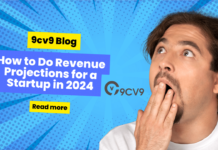



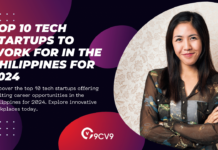
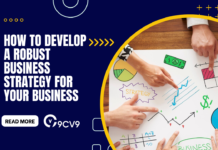
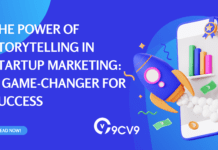





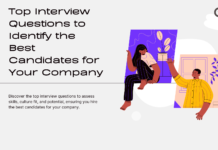
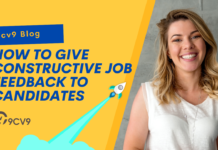

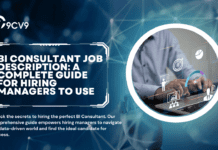


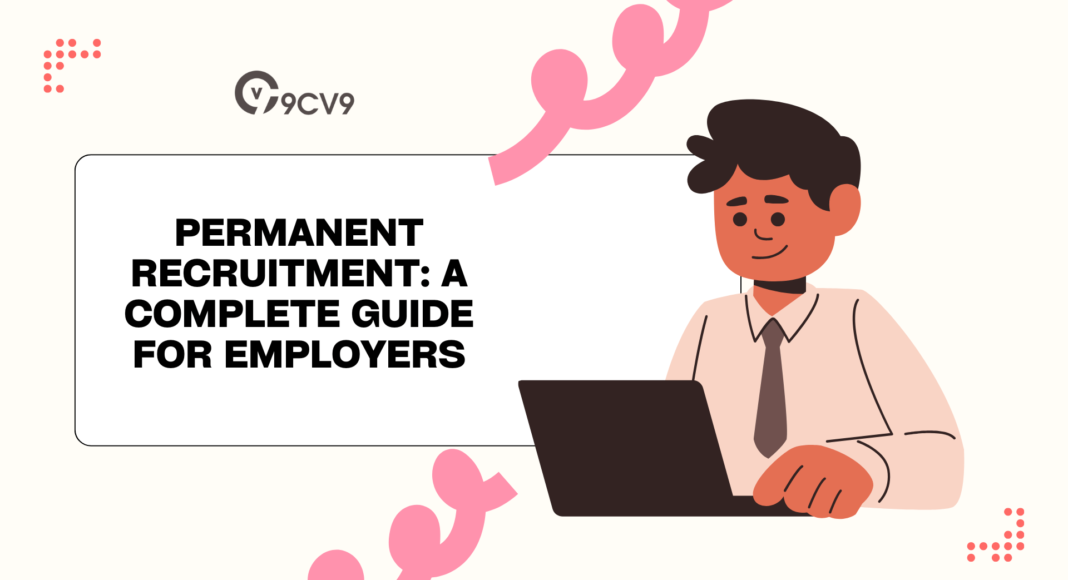


![Writing A Good CV [6 Tips To Improve Your CV] 6 Tips To Improve Your CV](https://blog.9cv9.com/wp-content/uploads/2020/06/2020-06-02-2-100x70.png)


